Transformation for communities and otters
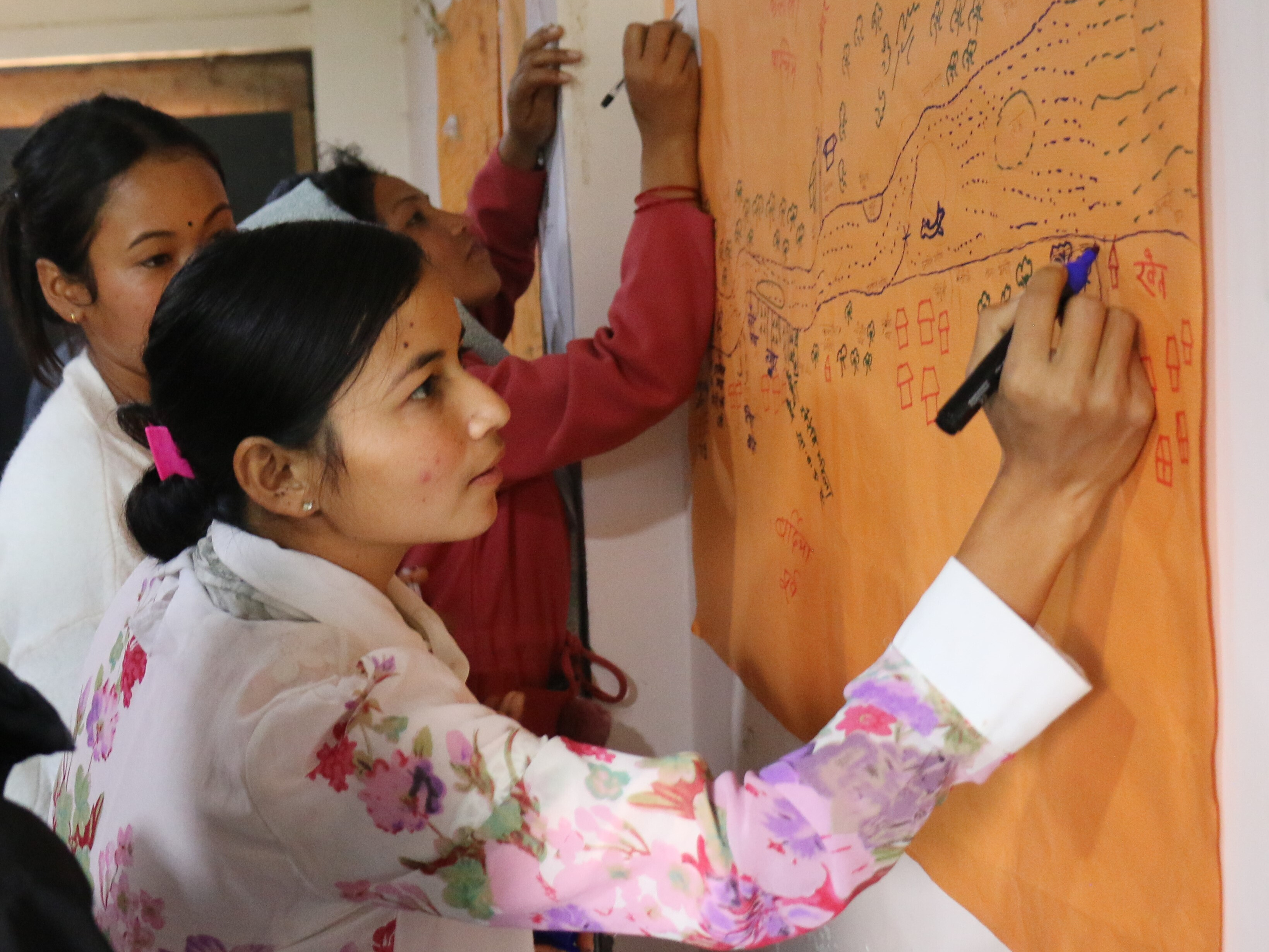
Komal Sonaha during a group exercise for mapping local resources. Credit - WWF Nepal, Aashish Kapali.
Trails of transformation: Engaging and empowering communities for otter conservation
Nestled along the Karnali River, one of Nepal’s richest ecosystems, lie the ancestral homes of the Sonaha and Tharu communities. These communities, deeply connected to the river’s natural resources, are among the country’s most marginalised groups. While the Karnali sustains their traditional practices, such as gold panning and fishing, their way of life is under threat due to unsustainable practices, limited livelihood options, and a lack of recognition of the Sonaha as a distinct Indigenous community.
Building blocks of the project
To address these challenges, the project has brought together conservation science and community empowerment, creating a path for sustainable livelihoods while protecting the habitat of the Smooth-coated otter, a vital species in the region. The project’s foundation is built on inclusivity. Free, Prior, and Informed Consent was conducted by Sonaha Bikas Samaj and Indigenous People leaders to obtain Tharu and Sonaha communities’ collective consent, incorporate their traditional and local knowledge, ensure equitable representation and participation of marginalised communities, and minimise and mitigate adverse impacts for the efficient implementation of conservation-based activities to ensure sustainability. To foster collaboration and ownership among community members, 15 Community River Stretch Management Groups (CRSMG) were formed along the river stretch, engaging 375 individuals, 68% of whom are women. These groups, formally recognised and registered with the local governments, play a pivotal role in fostering collaboration, local ownership and sustainability.
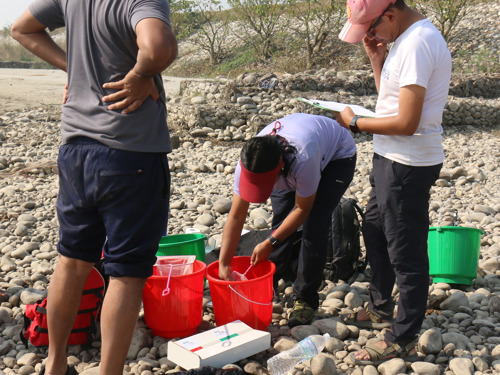 Fish experts during field assessment. Credit - WWF Nepal, Aashish Kapali.
Fish experts during field assessment. Credit - WWF Nepal, Aashish Kapali.
Combining traditional knowledge with science
A scientific fish abundance assessment, guided by community consultations, led to the identification of three potential fish sanctuary sites. The combination of science and traditional knowledge was instrumental in mapping critical areas for fish conservation. This approach not only mapped critical areas for fish conservation but also honoured and documented the community’s traditional knowledge, reinforcing their role as stewards of the environment.
Women leading the way
To cultivate leadership skills, improve decision-making abilities, and promote sustainable fishing practices, leadership training was provided to 219 women members of the CRSMGs.
Komal Sonaha shares her experience, “I am an otter champion. I now conduct various community-based awareness campaigns on behalf of our river stretch management group. My identity [in our community has transitioned] from Komal to “Uduwa waali”, meaning Otter Lady, due to involvement in the otter conservation. Our knowledge when it comes to resource use and practices has definitely upscaled.”
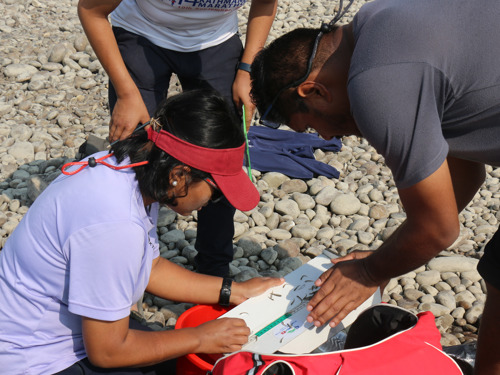 Fish assessment. Credit - WWF Nepal, Aashish Kapali.
Fish assessment. Credit - WWF Nepal, Aashish Kapali.
Fostering local understanding and acceptance
To ensure inclusivity, training workshops and events were conducted in the local Tharu language, creating a platform for better communication and understanding. Regular community dialogues were also conducted to bridge the gap between local government agency and community members.
The project mascot, “Sakhi” (meaning friend in Tharu), symbolised the otters’ new role in the community. Once seen as competitors by fishing groups, otters are now allies in a shared conservation journey.
Livelihoods transformed
Livelihood interventions implemented by the local Civil Society Organisation partner, Freed Kamaiya Women Development Forum, were focused on leveraging existing skills and local resources while addressing the needs and interests of individuals, along with providing opportunities to acquire new skills. Tailored training programmes supported individuals in skills such as on-farm training in pesticide-free vegetable cultivation, goat and pig farming, fish farming, and duck rearing, as well as off-farm training in natural fibre (grass-based) eco-friendly handicrafts, small tea and snack shops operation and food preparation, vocational training such as hair cutting and driving, along with training on entrepreneurship development to equip participants with knowledge necessary to manage and grow their chosen enterprises.
Samjhana Sonaha transitioned from a life of gold panning and fishing to running a family-owned restaurant in Rajapur. “Now I earn a substantial income to support my family. Furthermore, our business is family-run, and we promote our special Sonaha dishes and cuisines.”
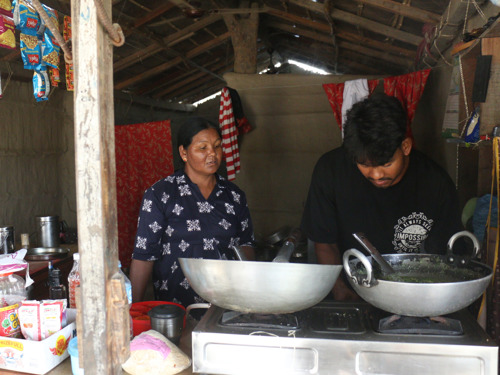 Samjhana Sonaha and her son Bishal Sonaha at their restaurant.
Samjhana Sonaha and her son Bishal Sonaha at their restaurant.
Credit - WWF Nepal, Aashish Kapali.
By engaging 65 former kamaiya (a traditional system of bonded labour) households, the project has not only improved economic conditions, but also enhanced their quality of life.
For Budhisingh Tharu, vegetable farming became a lifeline. “I was a Kamaiya, and after the government abolished the Kamaiya practice, we received about 5 kattha (around 1,693 m2) land for agriculture. However, the support we received barely met our family's needs. With no other means of income generation, I had to engage in day-to-day labour to make ends meet. Last year, I received training and input support in vegetable farming and have generated a net profit of about 90,000 Nepalese rupees (around USD 700) so far. I plan to expand my vegetable farm with proper irrigation to increase my harvest yield.”
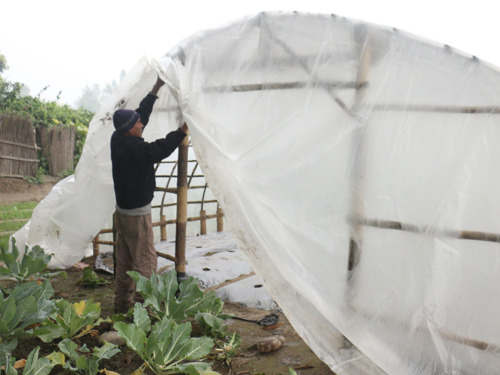
A win-win for people and nature
By prioritising the needs and voices of marginalised communities, the project not only contributes to otter conservation, but also enhances the livelihoods and cultural identity of the Sonaha and Tharu people. The project has demonstrated the significance of community engagement, inclusive planning, and empowering practices in conservation efforts aimed at preserving the Smooth-coated otter population while enhancing the livelihoods and resilience of Indigenous and local communities.
Written by Aashish Kapali, Rajesh Sada, Doma Tshering Sherpa, and Arati Rayamajhi. For more information on this Darwin Initiative Main project 30-017, led by WWF UK, please click here.
 Back
Back